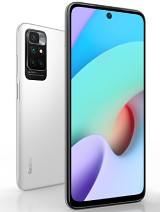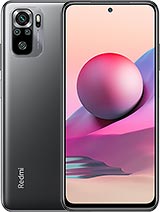Redmi Note 10, Redmi Note 10 Pro Max Unboxing, Price & First Impressions: 108MP camera, 120Hz Amoled By Gadgets 360
Welcome to gadgets 360. Today we're unboxing, not just one but two very important devices, the Xiaomi Redmi Note 10 and the Redmi Note 10 pro max now the Redmi Note family has been very important for Xiaomi in India and that's because of low prices and good features. This time around. The company is talking not just about specifications but also cameras, display, quality and design. So we'll get started and talk about everything that you want to know about these phones, including, of course, their core specifications and their prices. But before we do that, please do remember to subscribe to the gadget360 channel and hit the bell icon.
So you know whenever we publish a new video, so these are the boxes of the two siblings. We have the Redmi Note 10 here, which is the less expensive of the two and the Redmi Note 10 pro max, which is the top of the range there's. Also, a Redmi Note, 10 pro, which is virtually identical to the pro max other than its primary camera. And we don't have that one with us, but everything about it is basically the same as this. So you'll get a pretty good idea of what it's like anyway.
So, let's start with the more expensive of the two, that is the Redmi Note 10 pro max I'll put this one aside for now and let's get to the box. So here you can see it's pretty standard. We get our first look at Xiaomi's new evil design language, with a pretty elaborate design around the cameras on the back. We have the key specifications, of course, that 108 megapixel primary rear camera is the main attraction here and the thing that sets this model. Apart from the Redmi Note, 10 pro we've also got a 6.67 inch, 120 hertz ammo LED screen, which is sure to keep a lot of people happy a fairly large battery with fast charging and the snapdragon 732 g processor. Now this phone is available with up to 8 GB of ram and 128 GB of storage, but we've got a middle variant which has 6 GB of ram and 128 GB of storage.
Now Xiaomi has sent us an unsealed box, so we just have to pop open the lid and get our first look at its contents. So, let's check out what's right on top, this is, of course, the sim eject pin. We've got a clear, flexible plastic case and some very basic paperwork that we can that we can put aside here's the phone itself in black. We can take off this protective plastic wrapping peel off the regulatory sticker, and that is our first look at the very glossy Redmi Note 10 pro max, so that's the Rio as you can see, there are two layers to it: it has a slightly stepped design with one large protrusion and another smaller protrusion sticking out of it even further. So that's what that looks like in term of thickness.
We can switch this on and while that is booting, let's check out the rest of the box contents. So there isn't really much going on inside here. What we have is the charger which is relatively large and has a 33 watt output rating, and then we have the USB cable, which has a type c port on the phone end and red highlights to match the Redmi brand, and that is pretty much it, so now we can quickly step through the setup process, so we're running mini 12 here and, as you might have noticed, there are some steps during the setup process that ask what sort of advertising preferences you would like. And here, as we start up, we've got another big call out to Xiaomi's own get apps app store. Now the company does say that all of this will go away in the next version of mini, but it remains to be seen exactly how intrusive this software will be.
So here is our first look at the home screen of the Redmi Note 10 pro max, we've got a few preloaded apps here we can see the essential information about some hardware and software of this device, and now it's time for a closer look. So, as I started out saying, this is Xiaomi's new evil design, and it does look pretty premium. This phone is available in three colors and I have the black one with me. As you can see, there's a pretty elaborate design for the camera module. We've got four cameras here on the back.
The first one is a 108 megapixel primary rear camera, which uses a Samsung ISO cell hm2 sensor. Then we have a 5 megapixel super macro camera which claims to use 2x optical zoom to let you get even closer to a subject and should result in pretty good detail. So that will be something worth checking out in the full review. We've also got a fairly basic 8, megapixel ultra-wide camera and a 2 megapixel depth sensor rounding out the module on the front. We see a relatively tiny hole over here for the embedded front camera and if you see that ring around it, you can also tell that Xiaomi has attached an adhesive screen guard to this phone.
Already, it's pretty subtle, and you can only really see it around here on this black version. Now there is a silver reflective ring around the front camera, which makes it a little distracting uh and that sort of takes away from the fact that there is a relatively tiny hole for the camera itself. So it's not quite as unobtrusive as the company would have liked here on the side, we've got the tray for the sim cards and let us see what that looks like. So, as you can see, there are two NATO sim slots and a separate micro SD card slot, which means storage expansion will not cost you a second sim. On the top of this phone.
We have a 3.5 mm audio output, which is great if you like, wired headsets, there's also an infrared emitter, which is one of Xiaomi's hallmarks and that's a speaker grille on the top. We've got another speaker on the bottom, so you get stereo sound and an USB type-c port over there. On this side we have the power button, which has an integrated fingerprint sensor. Now it doesn't look like the traditional fingerprint sensors we've seen many times before. Uh, it's relatively slim- and this just looks like any other button and above that we have the volume controls.
So overall, this phone is relatively slim and light, considering all that it has to offer other than that camera bump. This is a pretty compact design, as we said before, this is a 6.67 inch, full HD plus super AMOLED panel. It has a 120 hertz, refresh rate and 100 DC ip3 wide color gamut support. You also get HDR 10, which means that videos will play with bright popping colors. Now Xiaomi has chosen to go with the Qualcomm snapdragon 732 g processor.
So that means this phone does not support 5g, but it should be pretty powerful uh, especially when it comes to gaming and performance, is something that we will be testing in detail in our full review. A few other things to note are the battery capacity, which is 5020 William hours and 33 watt fast charging is support. Now Xiaomi says that this phone is splash resistant uh, the ports are rubberized to protect against water ingress, which is good. The weight is 192 grams and the thickness overall is 8.1 millimeters. So that's pretty impressive for a phone that doesn't cost too much.
It could give some competition to what we call flagship killers in the 20 to 30 000 rupee price brackets, so that was a quick first look at the Redmi Note 10 pro max. Now, let's go across to the Redmi Note 10, which is the more affordable model in this series. Now Xiaomi has sent a sealed box this time, so, let's quickly pop that open. Once again, we have some highlights on the back this time we have a 6.43-inch full HD plus display, so that is slightly smaller, but the same resolution uh is also an AMOLED panel, so this phone should be a little easier to handle. We have a 48 megapixel rear camera, which is understandable, given the price uh.
There's a 5 000 William hour battery with the same 33 watt fast charging and a slightly lower end, Qualcomm snapdragon 678 processors. Again we have 6 GB and 128 GB, although that is the maximum available amount of ram and storage. With this model. Now both the Redmi Note 10 and the Redmi Note 10 pro max use, lpddr4xram and UFS 2.2 storage. So let's take a look at this phone, which is right on top and this time we have it in white.
It comes in this little pouch for protection, which we can put aside and peel off this sticker just like before. So we have the same evil design. Here you can see the camera pump is much less pronounced because of course, we don't have that huge 108 megapixel sensor, it still protrudes, but only a little and has the same decorative design. What we have here on this phone is a 48 megapixel primary camera, an 8 megapixel ultra-wide camera, a 2 megapixel macro camera and a 2 megapixel depth sensor. Let's turn that on and go through the setup process just like before.
So we have pretty much exactly the same setup process here with the same options for advertising, which is not a surprise at all. It's basically exactly the same experience in terms of software. Again we have the home screen, pre-loaded, apps and there's the basic information. So we have android 11 pre-loaded with mini 12 and that is expected to be updated to at least mini 12.5 and now for a closer look at the hardware. We have, of course, the same fingerprint sensor and volume buttons on this side.
The sim tray on this model also supports two NATO sims and a micro SD card on the top. We have the infrared, emitter and secondary speaker on the bottom, there's a type c port, a 3.5 mm, headset, socket and another speaker for stereo sound on the front over here we have a slightly larger camera with the same silver ring around it, which you might or might not find distracting and in terms of other core specifications, we have a 5000mah battery 33 watt, fast charging uh many of the same features. This phone weighs 178.8 grams and is 8.3 millimeters thick. The 6.43 inch super AMOLED display has a full HD plus resolution, but only a 60 hertz, refresh rate, which is understandable. Given the price you get up to 6 GB of ram and up to 128 GB of storage.
Now, let's compare these two phones side by side. So here we have the two phones side by side and, as you can see, there are a lot of similarities. In my left hand, I have the smaller Redmi Note 10 and in my right hand I have the larger and more expensive Redmi Note 10 pro max on the sides. They are pretty much identical on the top and the bottom you'll notice slight differences in terms of the placement of the ports and speakers. Both of them have the same fingerprint sensor on the side and volume buttons and, of course there are fairly big differences in terms of the camera modules.
As you can see, the thickness of the Redmi Note 10 pro max compared to the Redmi Note: 10. , here's a comparison of the two in terms of size. You can see that the Redmi Note 10 is a little smaller than its sibling. It's quite a bit shorter and also very slightly narrower. So I hope you found out everything you wanted to know right now about the new Redmi Note 10 and the larger and more expensive Redmi Note 10 pro max now.
These are two very different phones, but let me know in the comment section below which one you prefer and which one you're more likely to choose for yourself, thanks for watching and do remember, to stay tuned to catch 360 for the full reviews of both these phones coming up very soon. You.
Source : Gadgets 360





























